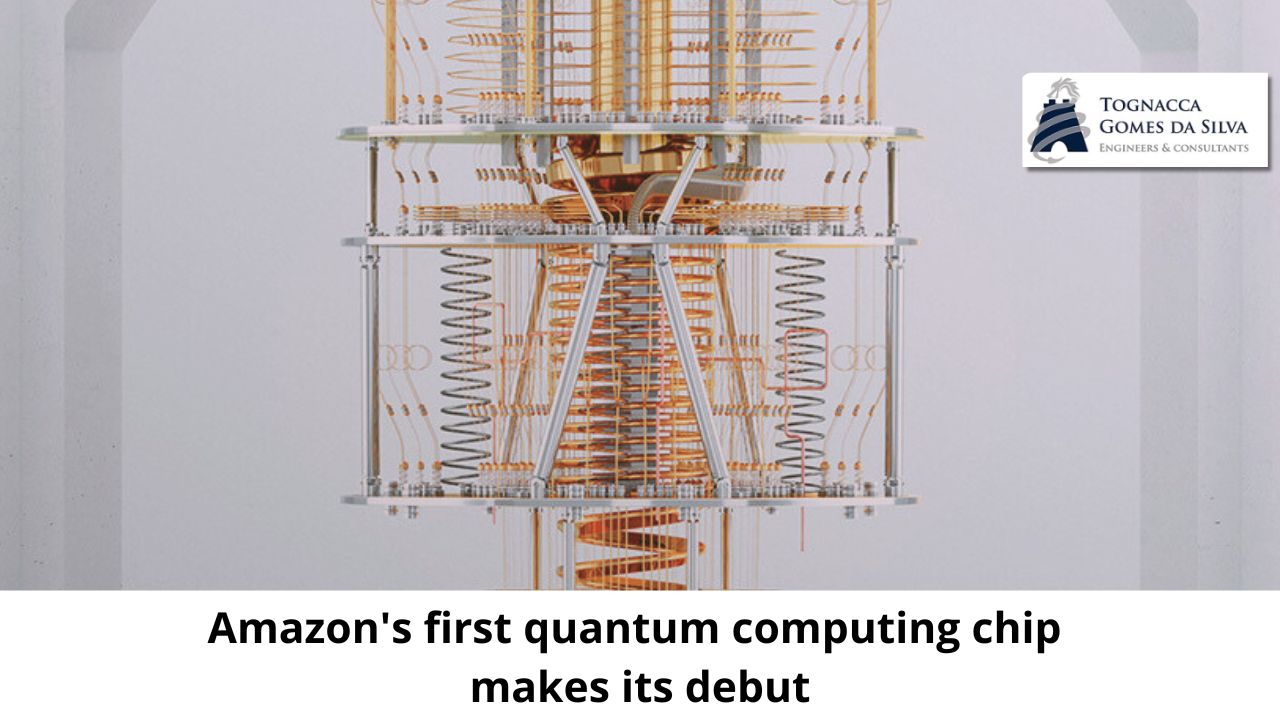Amazon Web Services has announced Ocelot, its first-generation quantum computing chip. While the chip has only rudimentary computing capabilities, the company says it’s a proof-of-concept demonstration—a step toward creating a larger machine that can deliver on the promise of game-changing industry applications like fast, accurate simulations of new battery materials.
“This is an early prototype that demonstrates that this architecture is scalable and hardware-efficient,” says Oskar Painter, head of quantum hardware at AWS, Amazon’s cloud computing unit. In particular, the company says its approach makes it easier to perform error correction, one of the key technical challenges in developing quantum computing.
Ocelot consists of nine quantum bits, or qubits, on a chip roughly one square centimeter in size, which, like some forms of quantum hardware, must be cryogenically cooled to near absolute zero to function. Five of the nine qubits are a type of hardware that the field calls a “cat qubit,” named after the 20th-century thought experiment Schrödinger’s Cat, in which an invisible cat inside a box can be considered both alive and dead. This superposition of states is a fundamental concept in quantum computing.
AWS’s cat qubits are small, hollow tantalum structures that contain microwave radiation and are attached to a silicon chip. The remaining four qubits are transmons—each an electrical circuit made of superconducting material. In this architecture, AWS uses the cat qubits to store information, while the transmon qubits monitor that information. This sets its technology apart from the quantum computers of Google and IBM, whose computational parts are all transmons.
Notably, AWS researchers used Ocelot to implement a more efficient form of quantum error correction. Like any computer, quantum computers make mistakes. Without correction, these errors accumulate, resulting in the inability of current machines to accurately execute the lengthy algorithms required for useful applications. “The only way to get a truly useful quantum computer is to implement quantum error correction,” Painter explains.
Unfortunately, the algorithms needed for quantum error correction typically require large amounts of hardware. Last year, Google encoded a single error-corrected bit of information using 105 qubits.
Amazon’s design strategy requires just a tenth of that many qubits per bit of information, Painter says. In a study published in Nature on Wednesday, the team encoded a single error-corrected bit of information into Ocelot’s nine qubits. In theory, this hardware design should be easier to scale to a larger machine than a design made up of only transmons, Painter says.
This design, which combines cat qubits and transmons, makes error correction simpler by reducing the number of qubits needed, says Shruti Puri, a physicist at Yale University who was not involved in the study. (Puri works part-time for another company developing quantum computers but spoke to MIT Technology Review in her academic capacity.)
“You can basically break down all quantum errors into two types — bit flips and phase shifts,” Puri says. Quantum computers represent information as 1s, 0s, and probabilities, or superpositions, of both. A bit flip, which also occurs in conventional computing, happens when the computer mistakenly encodes a 1 for a 0, or vice versa. In the case of quantum computing, a bit flip is when the computer encodes the probability of a 0 as the probability of a 1, or vice versa. A phase shift is a type of error unique to quantum computing, related to the wavelike properties of the qubit.
The cat-transmon design allowed Amazon to design the quantum computer so that any error would predominantly be a phase shift. This meant the company could use a much simpler error correction algorithm than Google’s — one that didn’t require as many qubits. “The hardware savings come from the fact that you mainly need to fix one type of error,” Puri explains. “The other error happens very rarely.”
The hardware savings also stem from AWS’s careful implementation of an operation known as the C-NOT gate, which is performed during error correction. Amazon researchers demonstrated that the C-NOT operation did not introduce disproportionately large bit-flip errors. This meant that after each round of error correction, the quantum computer still made predominantly phase-flip errors, allowing the simple and efficient hardware error-correction code to continue to be used.
AWS began working on designs for Ocelot as early as 2021, Painter says. Its development was a “full-stack problem.” To create high-performance qubits that could eventually perform error correction, the researchers had to figure out a new way to grow tantalum—the material their cat qubits are made of—on a silicon chip with as few atomic-scale defects as possible.
It’s a significant step forward that AWS can now manufacture and control multiple cat qubits on a single device, Puri notes. “Any work that aims to expand new types of qubits, in my opinion, is interesting,” she says. Still, there are years of development ahead. Other experts predict that quantum computers will need thousands, if not millions, of qubits to perform a useful task. “Amazon’s work is a first step,” Puri says.
She adds that researchers will need to further reduce the fraction of bit-flipping errors as they increase the number of qubits. Still, the announcement marks a path Amazon intends to follow. “This is an architecture that we believe in,” Painter says. Previously, the company’s main strategy was to invest in conventional transmon qubits, like those from Google and IBM, treating the cat qubit project as a “secret side project.” Now, they’ve decided to prioritize cat qubits.
“We were really convinced that this needed to be our main engineering effort. We’ll still do some exploration, but this is the direction we’re going.” (French startup Alice & Bob is also building a quantum computer made of cat qubits.)
At its current stage, Ocelot is essentially a demonstration of quantum memory, Painter says. The next step is to add more qubits to the chip, encode more information, and perform real calculations. But there are many challenges ahead, from connecting all the wires to interconnecting multiple chips. “Scaling is not trivial,” he says.
( fonte: MIT Technology Review)



